
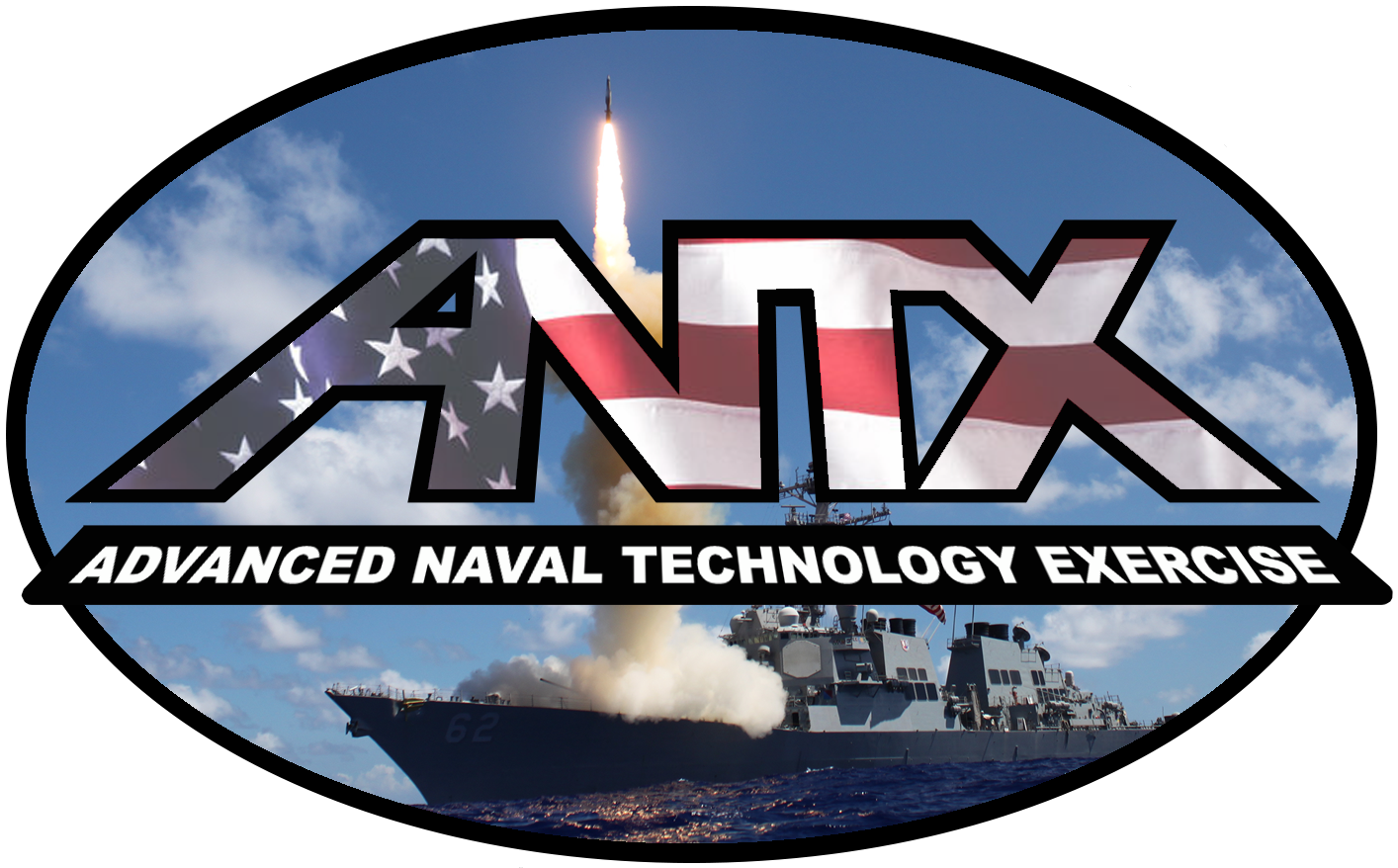


Coastal Trident was established in 2007 as a training and exercise program for the Port of Hueneme. It was conducted to assist in familiarizing local law enforcement and emergency response partners with the complex jurisdictional authorities, operational and technical limitations, and logistics considerations associated with the response to a major incident at the Port. Since its inception, however, Coastal Trident has expanded significantly in scope and influence, developing into a broader program that serves to support innovative operational research and offers unique resources to meet training, field experimentation, and exercise priorities among stakeholders in port and maritime security. Today, Coastal Trident is a series of technical demonstrations, field experiments, discussion-based and operations-based exercises.

Since 2017, ANTX Coastal Trident has been conducted by NSWC Port Hueneme Division in order to focus the technical capabilities and subject matter expertise of government, industry, and academic participants on Navy priorities and operational needs. Coastal Trident was leveraged as a venue to support high velocity learning and accelerate development, evaluation, and implementation of technologies to assist Navy forces in the following areas:
ANTX Coastal Trident activities facilitate technical demonstrations and field experiments designed to “expand the advantage” through technical exchange, collaboration, and innovation. In order to maximize the benefit to the warfighter, these projects are focused on identified gaps and urgent operational needs.
Coastal Trident is designed to include elements of “experiment” and “exploratory exercise” activities, in which capabilities can be assessed qualitatively in the context of “what is possible?” and “will this work?” These activities are intended to stop short of detailed technical evaluations and operations-focused “how would we?” questions, which typically require relatively mature capabilities and higher levels of operational integration.
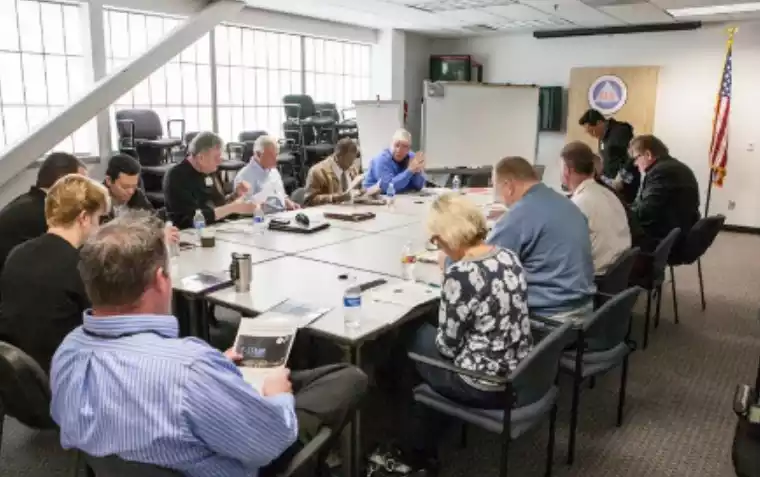
Normally used as a starting point in the cyclical “crawl, walk, run” approach to development of capabilities. Discussion-based activities include classroom instruction, seminars, workshops, tabletop exercises (TTX), and games. 9 These types of activities typically focus on existing plans, policies, MAA, and SOP. They are, therefore, exceptional tools for familiarizing participants with current or near-term capabilities.
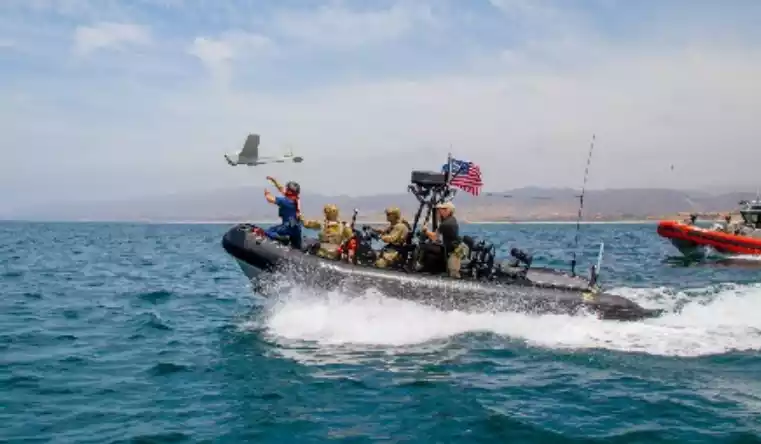
Apply scientific method in order to examine technology performance in a scenario, under expected operational conditions. This is done with the purpose of removing scientific controls from the test environment (e.g., laboratory conditions, where weather and other environmental variables are not factors) and observing the outcome under disruptive conditions that represent the intended use case.

Represent the “walk” and “run” phases of the exercise cycle. They are used to validate the plans, policies, agreements, and SOPs identified during discussionbased activities. Operations-based activities include drills, field training exercises (FTX), and full-scale exercises (FSE).10 They can be used to clarify roles and responsibilities, identify gaps in the resources needed to implement plans and procedures, and improve individual and team proficiency in scenario-specific tactics, techniques, and procedures (TTP).
Coastal Trident leverages privileged access to unique land-based, waterside, and offshore facilities throughout Southern California in order to establish robust and relevant learning environments. This area of operations spans more than 200 coastal miles and extends offshore, clear of congested shipping lanes and recreation areas.
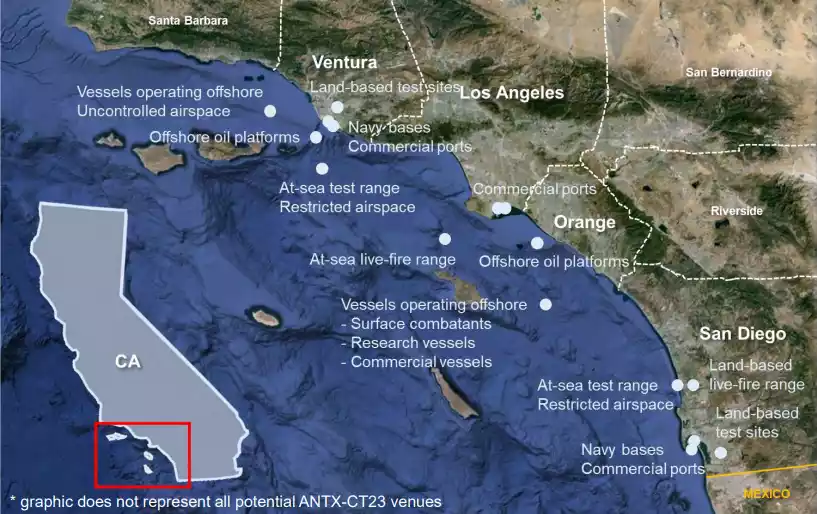
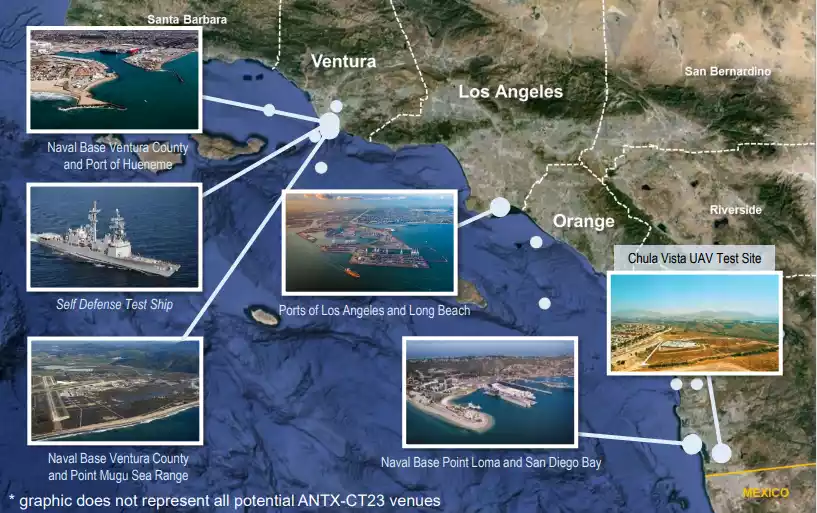
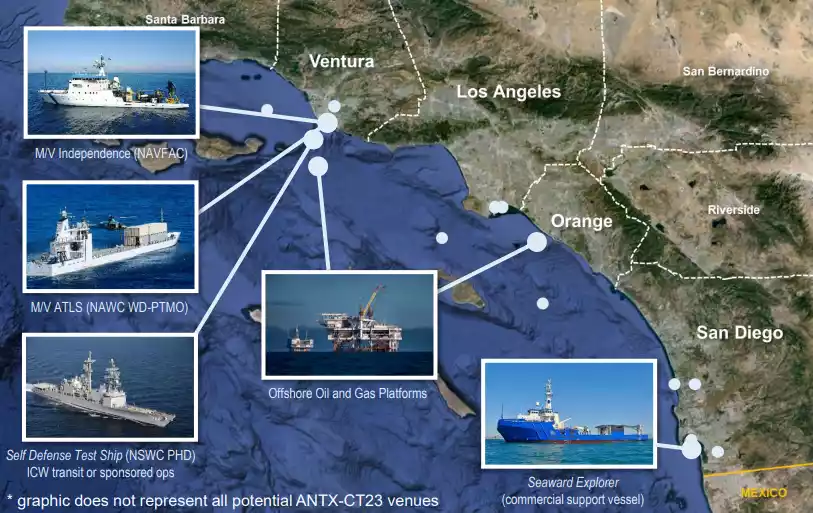
In 2026, ANTX-Coastal Trident will be conducted to facilitate concept demonstrations and field experiments in the following technology areas:
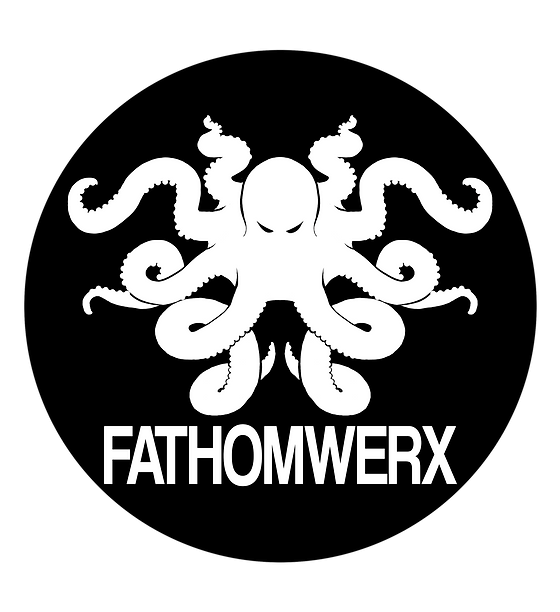
FATHOMWERX was established in 2018 via a Partnership Intermediary Agreement (PIA) with Economic Development Collaborative Ventura County (EDC-VC) (PIA #N63394-P-18-001) and a Memorandum of Understanding (MOU) with the Port of Hueneme and Matter Labs. FATHOMWERX supports a regional ecosystem to innovate, collaborate, and accelerate adoption of technologies.
ANTX Coastal Trident's alignment with FATHOMWERX expands access to technology developers and innovators that might not be engaged with the Navy through traditional acquisition pathways.
FATHOMWERXANTX-CT25 supported 76 unique projects that offered proposals to advance the state of the art in the global operations of naval forces and counter asymmetric threats to port and maritime security.
Learn MoreANTX-CT24 supported 82 unique projects that offered proposals to advance the state of the art in the global operations of naval forces and counter asymmetric threats to port and maritime security.
Learn MoreANTX-CT23 supported 71 unique projects that have offered claims to advance the state of the art in the global operations of naval forces and counter asymmetric threats to port and maritime security.
Learn MoreANTX-CT22 supported 74 unique projects that have offered claims to advance the state of the art in the global operations of naval forces and counter asymmetric threats to port and maritime security.
Learn MoreContact us at the emails linked below:
In order to communicate your intent to participate in this year's program and equip the ANTX-CT26 planning team with an initial understanding of systems under test, objectives, and support requirements, project teams are requested to submit a proposal.
Proposals can be submitted via email to the Principal Investigator using the blank form below or via the Outrider portal.
Submit Via Outrider Contact Principal Investigator Download Form